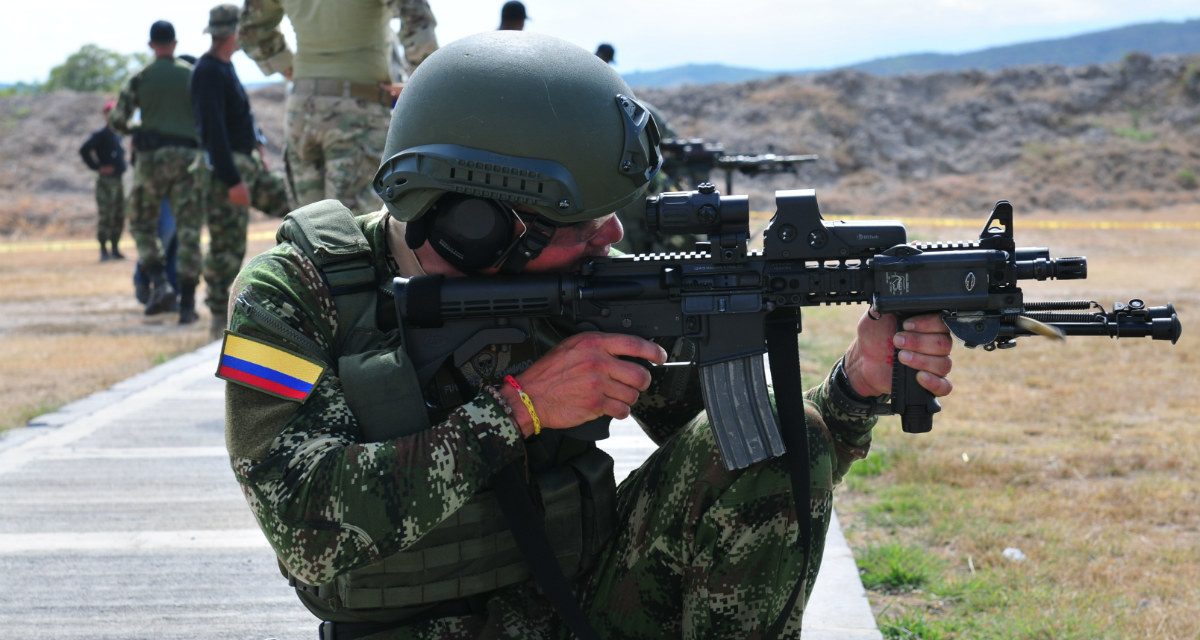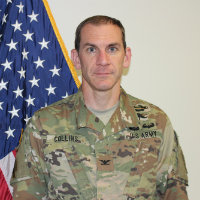In 2016, Colombia achieved a remarkable success by seemingly bringing to an end the Western Hemisphere’s longest-running insurgency. The Revolutionary Armed Forces of Colombia (FARC) has been at war with government forces for more than fifty years. And yet here was a negotiated settlement by which two parties that had been fighting for generations agreed to lay down their arms—by which the guerrilla organization itself would be brought into the government’s formal power structures. The case raises important questions—not least for a US government that watches the clock on its own counterinsurgency efforts in Afghanistan tick ever closer to two decades. How was this possible? And are there lessons that can be exported and applied to other intransigent conflicts, like Afghanistan? The Modern War Institute at West Point recently led a research trip to assess these and other questions.
To be sure, the case of Colombia offers not a shining success story but a cautionary tale of how the US military can assist a foreign military and a weak government in fighting a counterinsurgency to bring about peace. A signed peace agreement does not mean that all is instantly well. In Colombia, attacks continue, as the January 2019 terrorist attack against the police academy in Bogotá highlights, and cocaine continues to emanate from Colombia at record levels. Although promptly rescinded, a recent order by the Colombian army to double the number of criminals and guerrillas they kill caused a swirl of controversy among both its rank and file as well as human rights groups, given the armed forces’ past track record of targeting civilians to reach quotas. Still, the conditions in Colombia are significantly improved from what they were a decade ago.
The research we conducted in Colombia focused particularly on three military aspects of the war: the controversial role of Plan Colombia—a US-funded program aimed at curbing narcotrafficking and internal violence; the disarmament, demobilization, and reintegration (DDR) process; and the presence of narcotrafficking and organized crime. Specifically, we aimed to better understand how each contributed to or posed challenges for the peace process and how countries resolve wars through negotiated settlements.
While the Colombia model of counterinsurgency may not be generalizable to all conflicts, it does provide military planners with several valuable lessons. First, external interventions like Plan Colombia are implements to peace but are not by themselves sufficient. The plan worked as a counterinsurgency strategy but was less effective as a counternarcotics one, given that the drug trade in Colombia continues to flourish—with ongoing ramifications for the peace agreement’s endurance.
Second, negotiated settlements to end civil wars require local ownership by the national government and military. Deals perceived as externally brokered will lack legitimacy among the populace. Plan Colombia’s success at creating the conditions to bring the parties to the table is owed to the fact that it was primarily Colombian-led.
Third, when both carrots and sticks are fundamental to lasting peace in negotiated settlements. The Colombian government has launched a nationwide “Victory Plan,” involving some eighty thousand soldiers and police officers to occupy newly vacated FARC strongholds. Its military also carried out a series of targeted strikes and cross-border raids against key FARC leaders, which paved the way for successful peace talks. Yet coercion alone is not enough to achieve peace—incentives for rank-and-file insurgents to disarm and rejoin society were vital.
Fourth, DDR poses one of the central challenges to successful war termination. To prevent a recidivism to violence, ex-fighters in Colombia must be given proper training, opportunities, health care, psychological testing, and jobs to make it worth their while. But they also must feel secure, especially in and around the camps where many of them are rehabilitated. Attention must also be paid to erasing the societal stigma these ex-guerrillas face and to provide them adequate security.
Fifth, drugs help fuel and fund conflicts like Colombia’s. Narcotics can turn an ideologically motivated rebel fighter into a profit-driven kingpin, which then can introduce different and sometimes perverse incentives for civil war termination. The ongoing challenge of combating the organized crime and drug trade in Colombia requires an integrated approach between the ministries of defense and interior. On one hand, to combat this kind of crime requires patience, diligence, and detective work by national police. On the other, to coerce insurgents to the negotiating table requires the threat or use of military force brought to bear to make the costs of continuing to fight greater than suing for peace.
Finally, artificial quotas to capture or kill militants are an ineffective form of counterinsurgency or maintaining peace, as they create undue pressure on senior military leadership, create conditions that lend themselves to suspicious killings and cover-ups, and can lead to fracturing within the military and strained civil-military tensions.
Given these findings, are there specific lessons that should inform the US approach to Afghanistan? After more than seventeen years of war since 9/11, there are increasingly calls for the government of Afghanistan to broker peace with the Taliban. While there are some that argue it would be unwise to reconcile with the Taliban, at least with its leadership at the present time, it seems likely that this war will not be won by decisive military victory by either side. And while it may last for many more years or even decades, the case of Colombia provides some useful lessons:
- Bargain from a favorable position. Increased pressure against the FARC, to include the killing of several FARC leaders helped bring the FARC to the negotiating table and provided the government the upper hand. A sustained and effective offensive should proceed (and possibly continue during) negotiations.
- Negotiate behind closed doors. Media releases nearly derailed Colombia’s peace process. Premature releases of negotiations with the Taliban are likely to do the same. That is not a call to reduce transparency but an acknowledgement that a peace process requires patience, room for maneuver behind closed doors, and difficult choices and compromises, which if released to the public, can embarrass negotiators or worse, derail the process, and lead to a backslide to violence.
- Don’t put it to a popular vote. Civil wars are difficult enough to end without putting it to a popular vote; in Colombia, a public referendum rejecting the peace agreement nearly derailed the peace process. One negotiator we spoke to likened a peace process to a fine work of art: no artist would show an audience an unfinished painting.
- Bigger is not necessarily better. By all accounts, Plan Colombia was critical to ending the war, yet the investment was relatively modest. It totaled some $10 billion over a decade and was based on a small advisory footprint and providing limited military aid that the nation was capable of sustaining. Likewise, in Afghanistan US efforts should be based on supporting Afghan programs that are sustainable.
- Be prepared to shift from counterinsurgency to counternarcotics. While the violence in Colombia may be at its lowest level in years, coca production is now at an all-time high, despite the disbanding of the FARC. Even though drug trafficking and insurgencies often correlate, counterinsurgency and counternarcotics do not always reinforce one another.
- Reintegration is extremely difficult. While jobs training and attempts to find employment are challenging in Colombia, they are even more challenging in an underdeveloped nation like Afghanistan.
- International peacekeepers will likely be required. While the likelihood of a sustainable peace in Colombia continues to trend favorably without international peacekeepers, it would be dangerous to assume that they would not be needed in Afghanistan. In other conflicts, warring parties almost always returned to war unless a third party stepped in to enforce the treaty.
US-led operations in Afghanistan have yielded a high stack of tactical wins—at great cost—and yet strategic success remains elusive. Whether a negotiated peace can bring the conflict to a close, or even whether such a deal is possible, remains to be seen. But if a peace agreement represents a potential first step toward withdrawing US forces from Afghanistan, stakeholders in America’s longest-running war would be well served to consider these lessons from the Americas’ longest-running insurgency.
The views expressed are those of the authors and do not reflect the official position of the United States Military Academy, Department of the Army, or Department of Defense.




